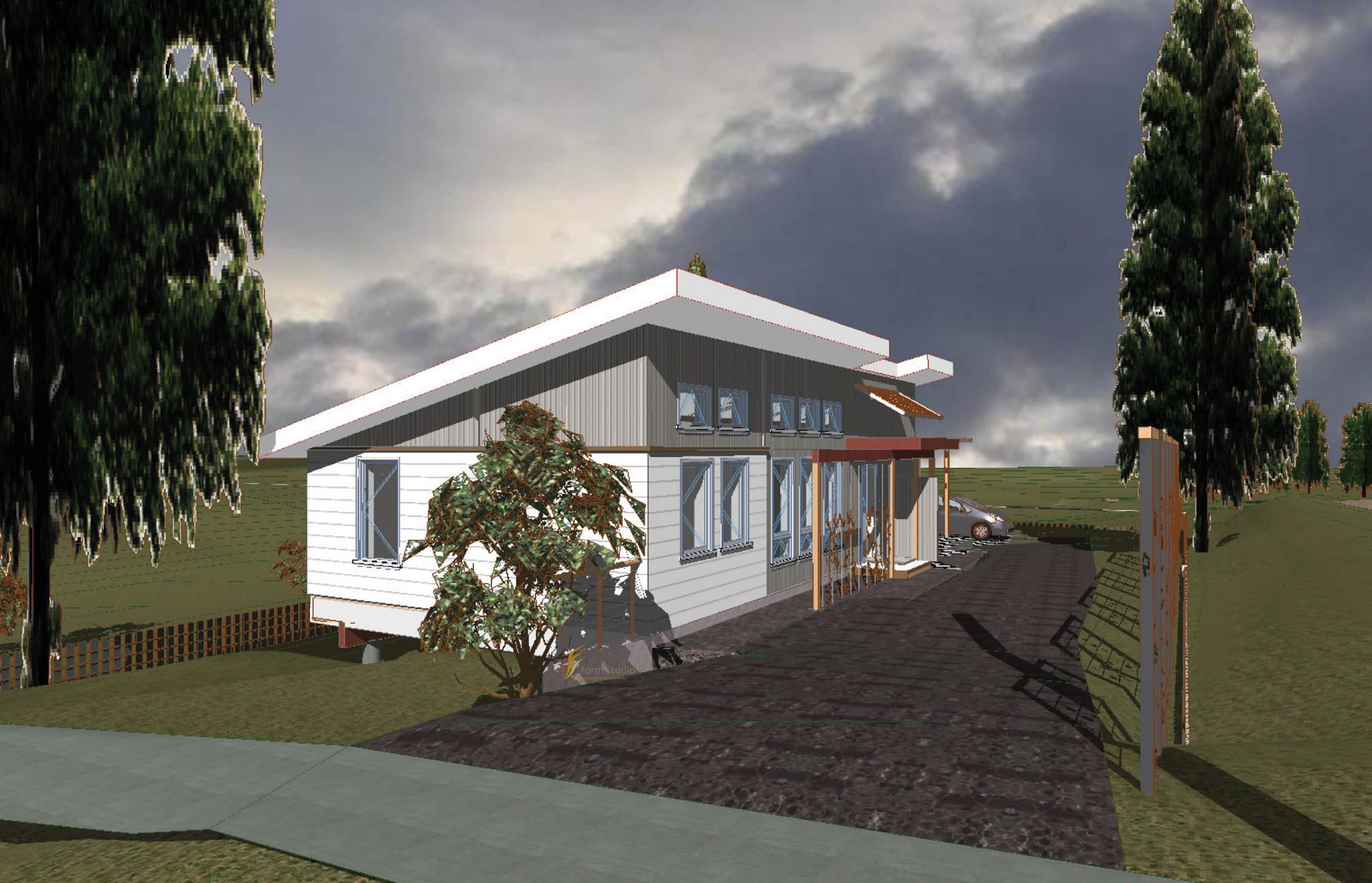The only remnants of the house that once occupied 9717 N.E. 25th Ave. are a worn driveway and an old mailbox on the street. Overgrown grass and brush cover most of the lot. It doesn’t look like much.
Crews demolished the rundown abandoned home last year. This summer, work begins on its replacement: The “Planet Clark Emerald House,” a Clark County-led project designed to showcase environment-friendly building features and put the property to better use.
The end result won’t embody the high-end excess some people might associate with green buildings. When it’s finished, the 1,154-square-foot house will be the home of a local low-income family, matched through Evergreen Habitat for Humanity. Habitat will also build the project with Vancouver-based Quail Homes.
“It’s not designed for upscale living,” said Chuck Dougherty, a building designer who helped shape the Emerald House blueprint. “It’s not huge, but it should work nice for a family and (be) durable for a number of families in the future.”
The project will use several features to save energy with practicality in mind, said Dougherty, who works with Form Studio in Vancouver. Special panels and windows will keep the home better insulated, he
said. Natural light and heat will reduce electricity use. A metal roof will allow for rainwater collection. High-performance fixtures and low-maintenance landscaping will cut down on water use.
Designers also put the home’s water heating source in a central location, Dougherty said, so it travels a shorter distance within the building. In other words, you won’t have to run the shower for 10 minutes before it warms up.
“If you want hot water,” he said, “it’s right there.”
The project’s total budget is $129,175, said Peter DuBois, Clark County sustainability coordinator. The out-of-pocket cost to the county is about $40,000, he said.
Planners say the project is about more than one family. Officials hope it gives an example to other developers who may want to incorporate some elements into their own work. On-site tours are planned during and after construction. It’s scheduled for completion later this year.
“It won’t change the face of the building environment around here,” Dougherty said. “But it will at least get some exposure.”
Emerald House gets its name from the “Emerald” designation of the National Association of Home Builders. That’s the highest green rating the organization gives out, not unlike the separate Leadership in Energy and Environmental Design (LEED) scale.
The home will be Clark County’s first Emerald home, though there are LEED-certified buildings already in the area.
The vision for Emerald House has changed since Clark County commissioners adopted a new building standard in 2010. DuBois said the county initially eyed the Living Building Challenge as its model, a high bar that would have essentially required a “net zero” structure with wastewater treated on site. Planners decided that simply wasn’t feasible. The home sits on a 7,500-square-foot lot, carved out of a larger county property.
For Evergreen Habitat, the project is a new partnership for an agency that values connections, said executive director Josh Townsley. It also takes Habitat’s focus on low-income housing into new territory, he said.
“All of our projects have some green element to them,” Townsley said. “But nothing to this level.”
Some of the home’s components will be constructed off site, then assembled on the property “like a jigsaw puzzle,” Townsley said. As with other Habitat projects, volunteers will play a big role in getting it built — including the eventual owners of the home, he said.
Environmentally friendly projects aren’t anything new for Quail Homes, a county leader in green buildings. Owner Jon Girod said sustainable features don’t have to drive costs through the roof. It can be as simple as positioning the home a certain way or using the sun to your advantage, he said. Many developers simply lack the experience in applying those tricks, he said.
“It’s like making an apple pie,” Girod said. “It takes time to get the recipe down.”
Eric Florip: 360-735-4541; http://twitter.com/col_enviro; eric.florip@columbian.com.




